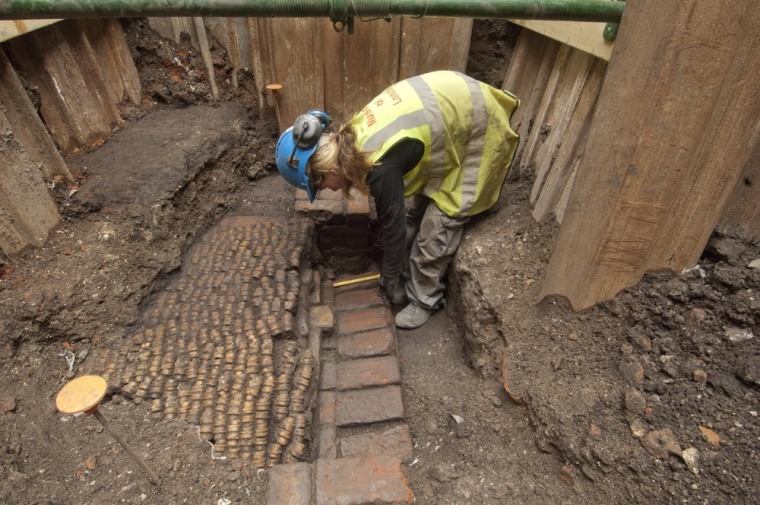Archaeologists in London have discovered the remains of an early playhouse used by William Shakespeare's company where "Henry V" and possibly "Romeo and Juliet" were first performed.
The Curtain theater, north of the river Thames in Shoreditch, was home to Shakespeare's company — the Lord Chamberlain's Men — before the riverside Globe theater was built.
Remains of walls forming the gallery and the yard within the venue were discovered by archaeologists from Museum of London Archaeology, or MOLA. "This is a fantastic site which gives us unique insight into early Shakespearean theaters," MOLA's Chris Thomas, who is leading the archaeological work, said Wednesday.
The theater was immortalized as "this wooden O" in the prologue of "Henry V" with the lines: "Can this cock-pit hold within this wooden O, the very caskes that did affright the Ayre at Agincourt?"
The Curtain opened in 1577, close to London's first playhouse, which was known simply as The Theater. The venue took its name from Curtain Close, a nearby street. The Lord Chamberlain's Men moved to the Curtain in 1597 after getting into a dispute with The Theater's landlord.
Patrick Spottiswoode, director of education at Shakespeare's Globe, said the company's experience at the Curtain was not a happy one. Audiences at the venue, which staged sword fights, acrobatics and bear-baiting as well as plays, were demanding.
"It was a different kind of house, and they were probably desperate to leave," Spottiswoode said. "Crowds would flock to the Curtain to see all sorts of activities — they didn't go there to see thesps."
The Lord Chamberlain's Men left the Curtain in 1599 for the Globe, the theater they'd built using timbers smuggled from the original Theater.
The Curtain survived as a theater at least until the 1620s, making it the longest-lived of London's Elizabethan playhouses. Some experts say it may have remained in use until the English Civil War in the 1640s.
Archaeologists stumbled upon the Curtain's remains on Hewett Street after work began on a real estate development project last October. Soon after the remains were found in an exploratory dig, architects began drawing up plans to preserve the remains while allowing the development to go ahead.
A spokesman for Plough Yard Developments, the company leading the project with the Estate Office Shoreditch, said the excavations could become a preserved centerpiece of a new housing and shopping area.
The plans are set to go on display on June 8 and 9 at the site.
"Although the Curtain was known to have been in the area, its exact location was a mystery," the Plough Yard spokesman said.
London has been celebrating its cultural heritage with a world Shakespeare festival taking place at the Globe and across Britain, as part of a festival timed to coincide with the Olympics this summer. The festival runs through November.
Heather Knight, a senior Museum of London archaeologist, said that despite recent discoveries there is still much to learn about the Elizabethan theater. The remains of The Theater were discovered nearby only a few years ago, in 2008. Another early Elizabethan theater, the Rose, was unearthed in 1989.
"The late 16th century was a time of a theatrical arms race in London," Knight said. "The proprietors of these building were making improvements to attract customers. So to have the chance to look at the earliest of these buildings, and the one that had the longest life, is a real opportunity."
More about Shakespearean theater:
- Much ado over The Theater's ruins in London
- The Bard or not the Bard? That is the question
- Shakespeare celebrated at world festival
This report includes information from Reuters and The Associated Press.
